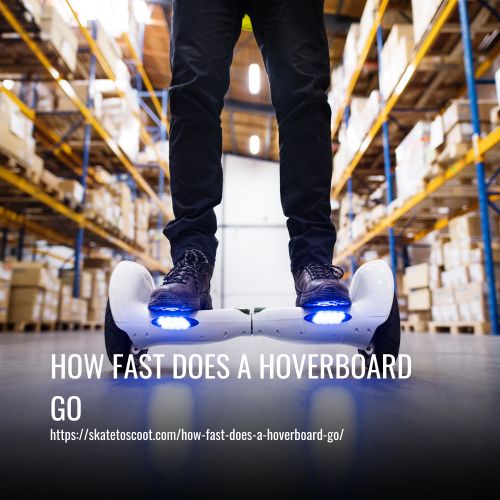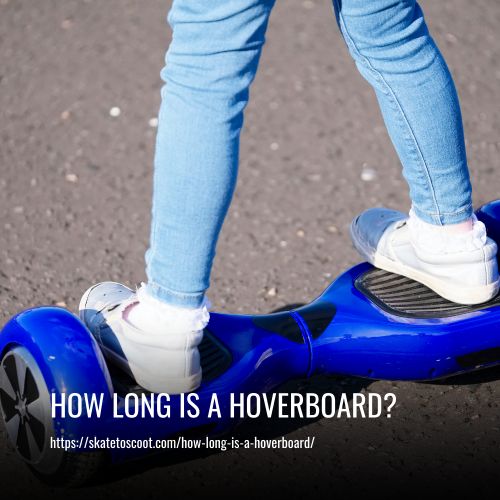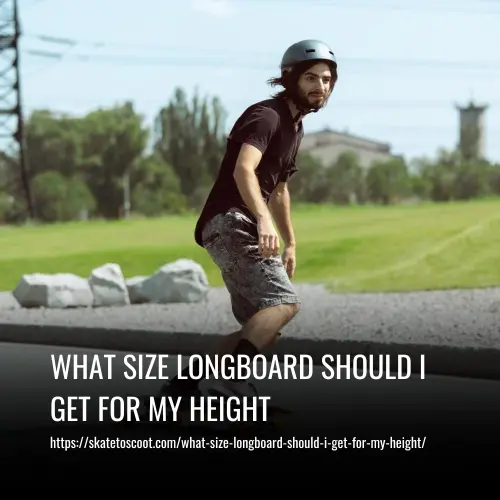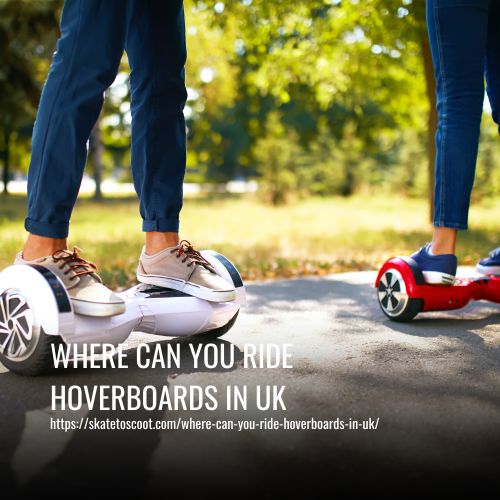As an Amazon Associate we earn from qualifying purchases.
The speed of a hoverboard varies depending on the model. The HovertraxDLX2.0 can reach up to 9 mph, while the Hovertrax 2.0 and Hovertrax 1.5 can reach 8 mph and 6 mph, respectively. It’s important to research the speed of a hoverboard before purchasing.

The Need for Hoverboard Speed
One of the key factors in choosing a hoverboard is the maximum speed it can reach. Once you have mastered the basics of riding, you may want to push your board to its limits and achieve high speeds. However, it is important to be aware of the various factors that can affect a board’s speed, including the model, the rider’s age, and skill level.
The maximum speed of a hoverboard can vary greatly depending on the style and model of the board, as well as the surface it is ridden on. On average, self-balancing boards can reach speeds of around six to eight miles per hour, while all-terrain boards can achieve speeds of up to thirteen miles per hour. However, these speeds are not always achievable in all conditions and on all surfaces.
What are the Factors that Determine the Speed of a Hoverboard?
Several factors can affect the maximum speed of a hoverboard. Various aspects such as the power of the motor, the size of the wheels, the weight of the rider, and the type of terrain can all contribute to the speed capabilities of a hoverboard. In this article, we’ll delve into each of these factors to better understand how they impact the speed of a hoverboard.
1. Wheel Size:
The size of the wheels is an essential factor when it comes to determining the speed of a hoverboard. In other words, hoverboard speed is influenced by the diameter of the wheels. Not all wheel sizes have the same speed, and it varies according to different levels of riders.
Different brands produce hoverboards with different wheel sizes. The most common wheel sizes are 6.5-inch, 8-inch, 8.5-inch, and 10-inch. 6.5-inch wheels are a great option for beginners and can go up to a maximum of 6-8 mph. The wheels’ size provides more clearance, making it easier for riders to ride on uneven surfaces.
For intermediate riders, the 8-inch wheel size is perfect and can reach speeds of over 10 mph. The wheels are wider, providing additional stability to the rider, and can carry heavy loads. Advanced riders can opt for hoverboards with 10-inch wheels that have a maximum speed of 13-15 mph, but it’s essential to note that the speed limit can depend on several factors, including rider weight and terrain.
2. Weight Factor:
The weight factor plays an important role in determining the speed of a hoverboard. This is why all self-balancing scooters available in the market have a weight limit. Essentially, the weight of the rider directly affects how fast the hoverboard can go.
When maintaining a constant battery power, the maximum speed of a heavier electric scooter requires more power. Thus, it is important to consider your weight and the weight of the scooter before making a purchase, to prevent any potential damage from surpassing the weight capacity.
For instance, standard hoverboards can carry riders weighing between 200-250 lbs. without compromising speed. However, heavier riders should opt for models designed to support their weight if they want to maximize the hoverboard’s speed limit. Nowadays, there are numerous high-end models available that cater to heavy riders and still reach the maximum speed limit, avoiding the possibility of harm along the way.
3. Quality of the Battery:
When it comes to hoverboards, battery quality is an essential factor to consider. High-quality batteries not only provide a better ride experience but also offer longer battery life which enables users to ride for a longer duration. Most hoverboards come with batteries that provide 2-3 hours of continuous riding on a single charge.
However, it is important to note that investing in better battery quality often comes at a higher price. But, it is worth the investment in the long run. It is also important to consider the types of batteries that the hoverboard has. Some hoverboards come with dual motors that can handle heavier weights and rough terrains, which can take a toll on battery life. Therefore, before making a purchase, it is important to research and invest in a hoverboard with a high-quality battery for a safe and enjoyable ride.
4. Hoverboard Design:
The design of a hoverboard affects its speed. There are different designs with varying wheelbases, including small, medium, and large. Some have a single center wheel, while others have two wheels. While both designs provide a great surfing sensation, what effect do they have on speed?
Well, the design can affect a hoverboard’s speed, depending on the material used for construction. For instance, some electric scooters have an aluminum frame and alloy build. Others, on the other hand, use lightweight and strong polymer materials. Of these two materials, the latter gives more speed to the hoverboard. Thus, one should also consider the material and design to determine if it’s one of the fastest hoverboards in the market.
5. Power Capacity of the Motor:
When it comes to achieving high speed and performance from your hoverboard, the motor’s power capacity plays a crucial role alongside the battery quality. Today’s self-balancing scooters come with a powerful motor and battery system that work together to provide the desired output.
The motor’s power capacity is directly proportional to the speed and performance of the hoverboard. For instance, hoverboards with dual-motor systems can generate double the power and speed of one-motor models. Such models typically come with a motor power capacity of 300 watts or more per motor, resulting in 600 watts of total power.
6. The Surface of the Ride:
When hoverboards were first introduced, they were primarily designed for smooth surfaces like pavements or indoor floors. However, as kids’ preferences evolved, manufacturers started to produce off-road hoverboards, able to navigate uneven surfaces like gravel, rocks, and grass. These off-road hoverboards have larger wheels, high ground clearance, and a powerful motor-battery system, which ensures smooth rides on rough terrains.
Recently, manufacturers have added road hoverboards to their line-up, allowing riders to cruise on paved roads. One of the most significant advantages of road hoverboards is their ability to maintain maximum speed on a variety of surfaces, including uneven roads and even grass. Additionally, some hoverboards also come with a learning mode to help riders navigate any kind of surface better.
7. Temperature:
The temperature can affect the speed of a hoverboard, albeit not a major one. This is because hoverboards are powered by a battery and motor system, so it’s important to understand how temperature affects these components.
When the temperature rises, the performance of the battery and motor improves. As the motor’s performance increases, so does the speed of the hoverboard. On the other hand, if the temperature drops, it will have a negative effect on the speed of the hoverboard. In a nutshell, the hotter the temperature, the faster the hoverboard will go, and vice versa. The speed of a hoverboard is determined by certain key factors.
FAQs
The Halo Rover X is currently the fastest hoverboard in the world. With a top speed of 10 miles per hour (MPH), it has been able to outpace its competitors and establish itself as a leader in the hoverboard market.
Although other hoverboards can reach 10 MPH, none have been able to consistently maintain this speed like the Halo Rover X. Additionally, the hoverboard is capable of covering a distance of 10 miles on a single charge, making it not only fast but also efficient for longer rides.
When it comes to the top speed of a hoverboard, an average unit usually has a maximum capacity of 6-7 miles per hour. If you’re looking for faster speeds, you’ll need to opt for a high-speed hoverboard with a more powerful motor, capable of going up to 10 miles per hour.
It’s essential to keep in mind that the top speed of a hoverboard may be influenced by the riding surface and the weight of the rider. Generally, a smooth ride can be achieved on flat surfaces, while uneven road capabilities and rough terrain can throttle back the maximum speed. Additionally, keep in mind the weight limit and the battery life, as both can affect the speed and performance of your hoverboard.
It is important to avoid attempting to make your hoverboard faster than its intended speed. Tampering with your hoverboard may void its warranty and even make it unsafe to use.
Hoverboards are designed to go up to 10 miles per hour, which is a safe and efficient speed for personal transportation. If you are looking for a faster option, you may consider an electric scooter instead.
Hoverboards typically have an average top speed of 6 to 8 mph, making them a safe and practical choice for personal transportation. However, some off-road models with larger wheels and more powerful motors can reach speeds of up to 12 mph, providing a faster and more exhilarating ride.
If you’re in the market for a hoverboard and want to prioritize speed, look for models with larger wheel sizes and powerful motors. Keep in mind that faster speeds may also require additional safety features like elbow pads or training modes to ensure a smooth and safe ride. Always make sure to follow the manufacturer’s guidelines and local regulations for maximum speed limits and rider weights.
Yes, 12 mph is considered fast for a hoverboard compared to the average speed of 6-8 mph for a typical hoverboard. However, it is essential to keep in mind that hoverboards are positioned as a toy and most riders are children and minors.
Therefore, it is crucial to maintain a safe speed to prevent accidents and injuries. Going too fast on a hoverboard can be unsafe and increase the risk of accidents, which is why it is recommended to stay within safe speed limits and exercise caution while riding.
The Hover-1 hoverboard boasts an impressive maximum speed of 9 mph, offering a thrilling ride for those seeking an exciting rush. However, it is important to note that most models have a slightly lower maximum speed of 7 mph, which still allows riders to zip around smoothly and comfortably.
This hoverboard’s speed capabilities make it suitable for flat and smooth surfaces, and it can accommodate a variety of rider weights. With powerful motor and training modes, this hoverboard is perfect for riders looking to improve their balance and maneuverability. It is also equipped with safety features such as elbow pads, making it a safe and fun option for riders of all ages. Although it may not be suitable for rougher terrain, the Hover-1 hoverboard provides a smooth ride and an impressive speed for those looking for a thrilling ride.
A hoverboard is faster than walking. While the average walking speed of a human is around 3-4mph, a hoverboard has a minimum speed of at least 6mph (except for when using children’s mode). As a result, riding a hoverboard is considerably faster than walking.
Some high-speed hoverboards can reach impressive speeds of up to 10-12mph. However, it’s important to keep in mind that hoverboards are designed for use on flat surfaces and may not perform as well on uneven terrain. Regardless, for those looking to get from point A to point B quickly, a hoverboard is certainly a faster option than walking.
The title for the fastest hoverboard currently in the market goes to Gyroor F1. According to various sources, it holds a top speed of 10 mph and has a range of 10 miles on a single battery charge. However, third-party reviewers suggest that the hoverboard can reach a maximum speed of 12 mph which coincides with the product’s claim of a powerful motor.
Though it’s not advised to ride a hoverboard at its highest speed, the Gyroor F1’s powerful motor and long-lasting battery are perfect for even the most adventurous riders. With a 2-3 hour charge time and its capability to handle uneven surfaces, this self-balancing scooter is the perfect combination of efficiency and fun. Overall, it’s no wonder why this hoverboard remains one of the top choices for riders looking for speed and quality.
Hoverboards have varying battery lives, typically lasting between 1-4 hours per charge. However, this duration can fluctuate depending on various factors such as rider weight, maximum speed, and terrain conditions.
In terms of overall lifespan, there is no definite timeframe as to how long a hoverboard will last. Alternatively, users can use the device for as long as the battery is functional. Additionally, if there is an issue with the battery, it can be easily replaced without having to purchase a new hoverboard.
Yes, hoverboards can climb uphill. Thanks to the tilt assist system in the hoverboard, riders can climb slopes without exerting too much additional effort. It’s important to note, however, that while the general climbing ability of a hoverboard is 10 degrees, off-road hoverboards are designed to climb up to 15 degrees.
It’s crucial to regulate your speed when riding downhill to prevent accidents from occurring. Despite having the capacity to go uphill, some hoverboards’ climbing abilities may not be particularly strong, so it’s important to take into account the incline and your weight to determine if your hoverboard is suitable for the terrain.
Conclusion:
This comprehensive guide has provided valuable information about the maximum speed of hoverboards. Depending on the model, hoverboards can reach speeds ranging from 6-15 mph. The speed of a hoverboard is influenced by factors such as wheel size, motor power, rider weight, terrain, and battery life.
By understanding the speed ranges of hoverboards, riders can make informed decisions on the type of hoverboard that fits their needs. Moreover, riders should always prioritize safety when riding a hoverboard by wearing protective gear and adhering to speed limits and terrain capabilities. Overall, this guide equips riders with the knowledge they need to have a fun, smooth, and safe hoverboard experience.
Amazon and the Amazon logo are trademarks of Amazon.com, Inc, or its affiliates.



